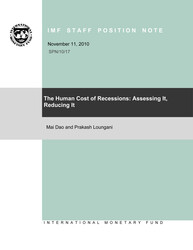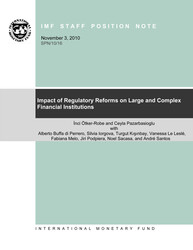
Gauging Risks for Deflation
Deflation is typically defined as a sustained drop in the general price level.
READ MORE...
Volume/Issue:
Volume 2009
Issue 001
Publication date: January 2009
ISBN: 9781589067295
$5.00
Add to Cart by clicking price of the language and format you'd like to purchase
Available Languages and Formats
| English |
Prices in red indicate formats that are not yet available but are forthcoming.
Topics covered in this book
This title contains information about the following subjects.
Click on a subject if you would like to see other titles with the same subjects.
Banks and Banking , Inflation , Economics- Macroeconomics , SPN , rate of inflation , debt-deflation mechanism , deflation indicator , price level , headline inflation , Japan deflation episode , deflation vulnerability indicator , core CPI , inflation expectation , Inflation , Deflation , Real interest rates , Central bank policy rate , Asset prices , Global , Africa
Summary
This paper discusses deflation risks and policy options. The paper highlights that slumping collateral values have exacerbated the credit crunch, and monetary policy has lost effectiveness in stabilizing output. A model-based analysis for the G3 economies (United States, euro area, and Japan) also suggests that, on the assumption that the financial distress is gradually resolved, the most likely outcome is that the global economy will stay clear of sustained deflation. However, if financial sector problems are not remedied or further shocks add to current stresses, there is a significant probability of more negative deflationary outcomes, with a deeper and more prolonged recession. The chapter underscores the crucial role of financial sector policies in remedying deflationary pressures directly and indirectly, by enhancing the effectiveness of monetary and fiscal policies. Monetary policy can help in some areas; however, supportive fiscal policies are likely to be needed to prevent a deflationary episode becoming entrenched. Monetary policy measures include operating in a broad range of financial markets to relieve credit rationing, and to lower risk spreads and term premiums. Finally, to reinforce long-run inflation expectations, central bank communications should emphasize the commitment to return inflation to objectives with all due speed.



